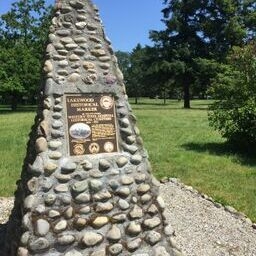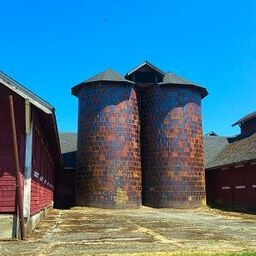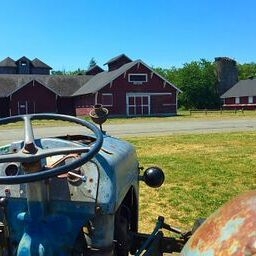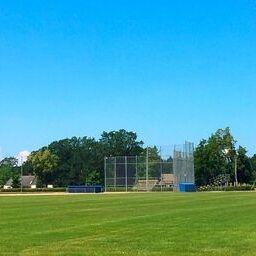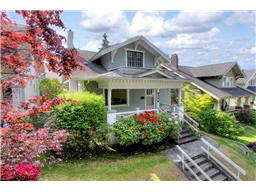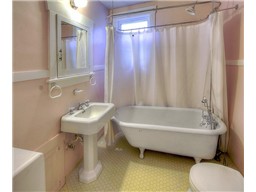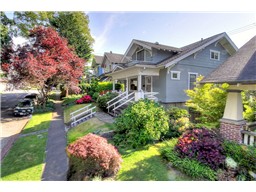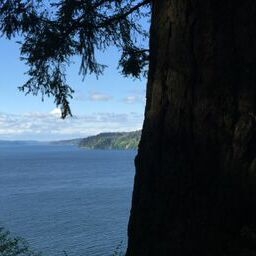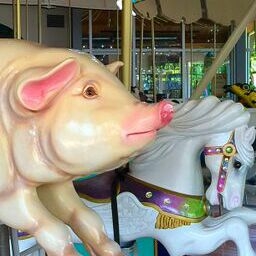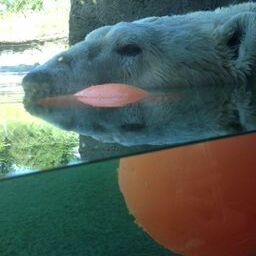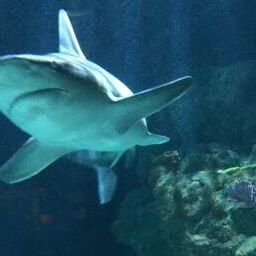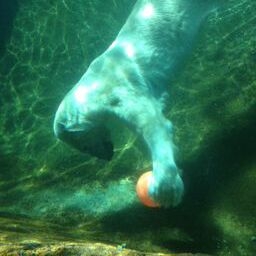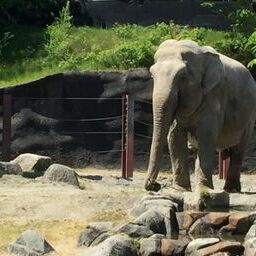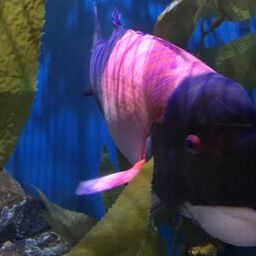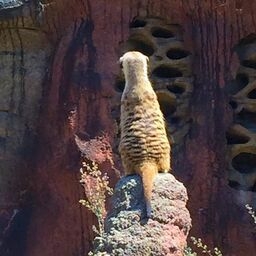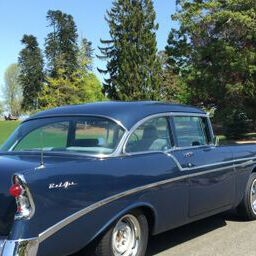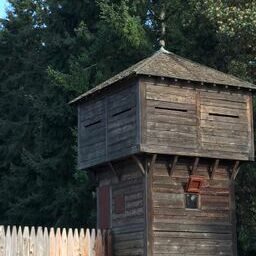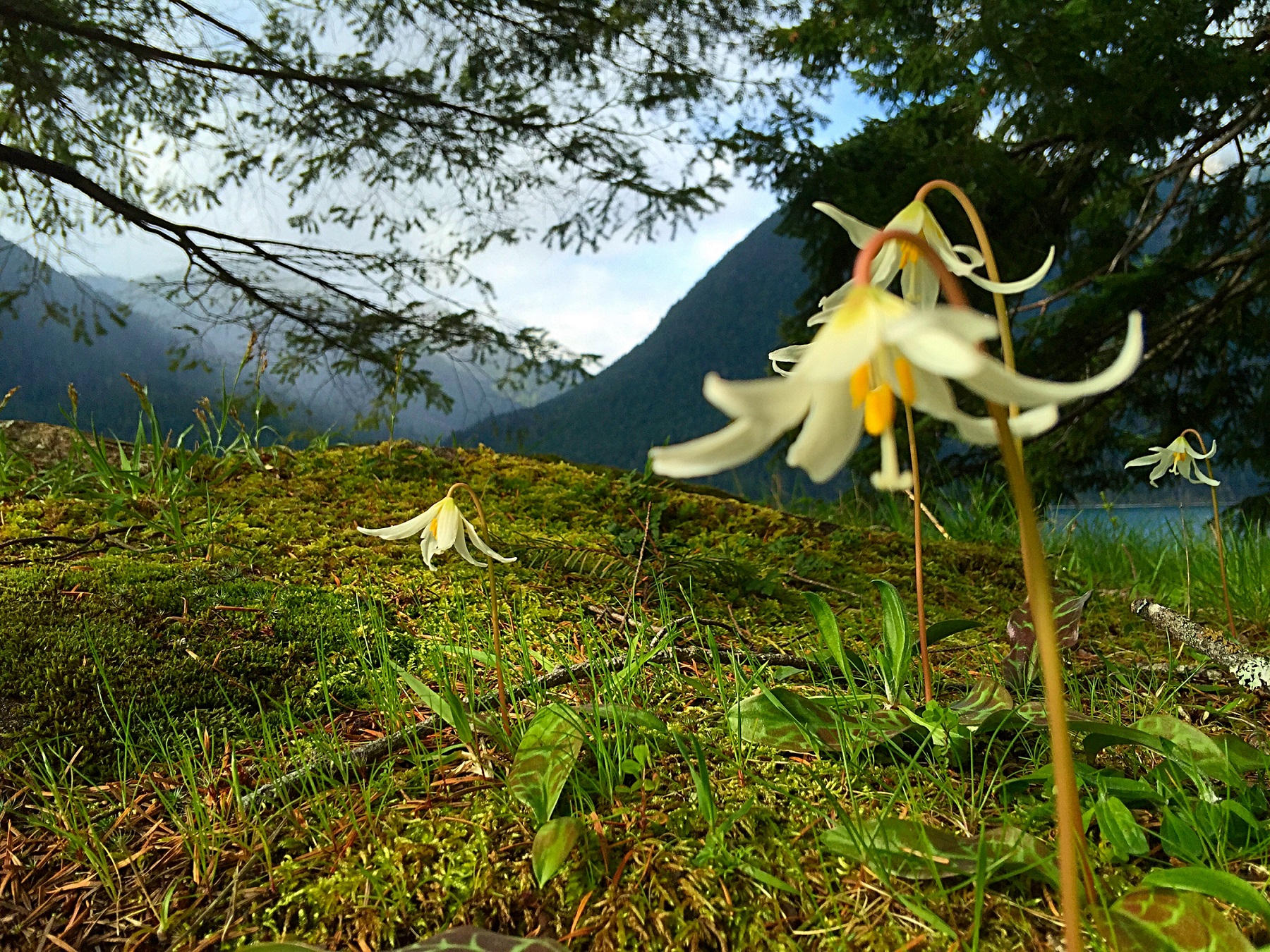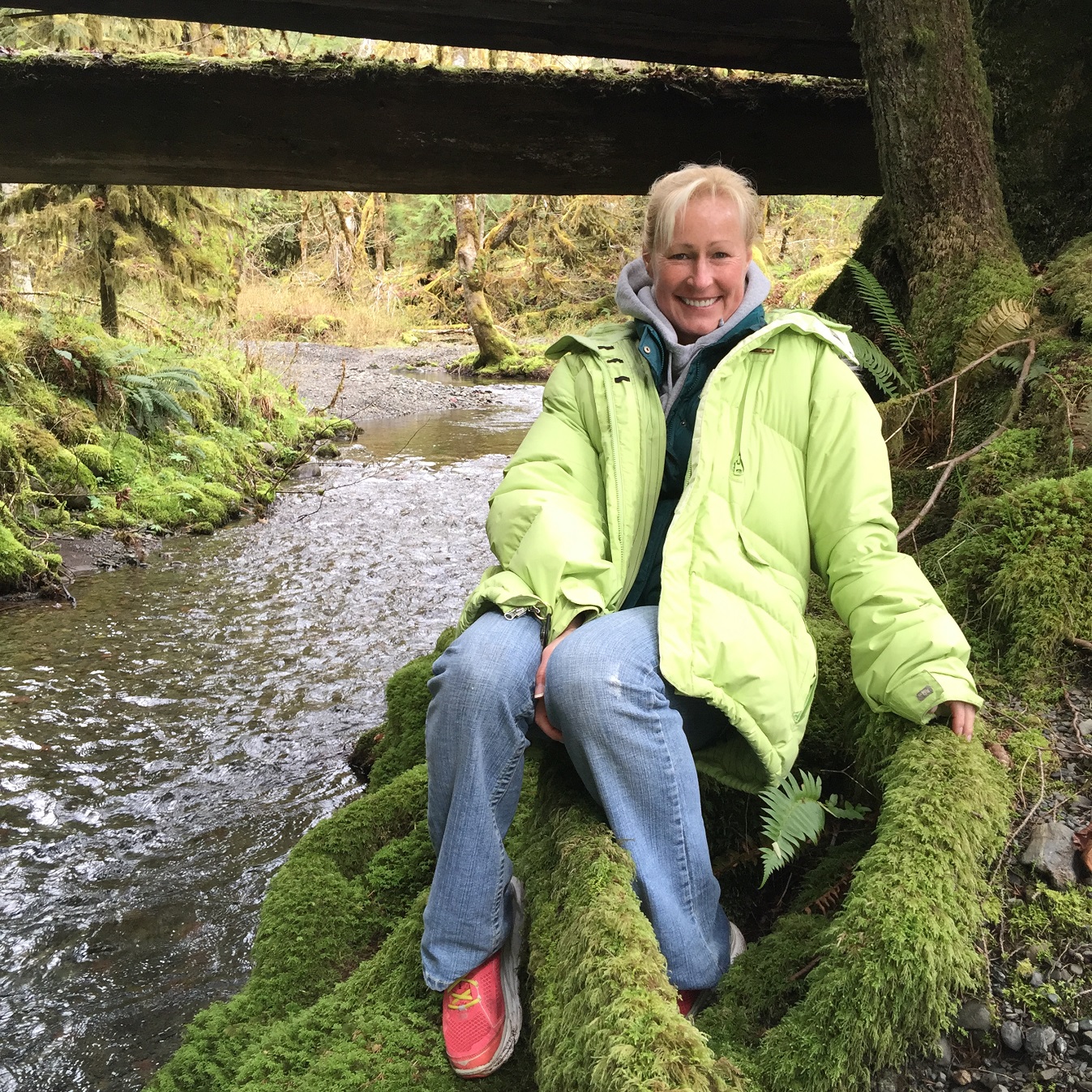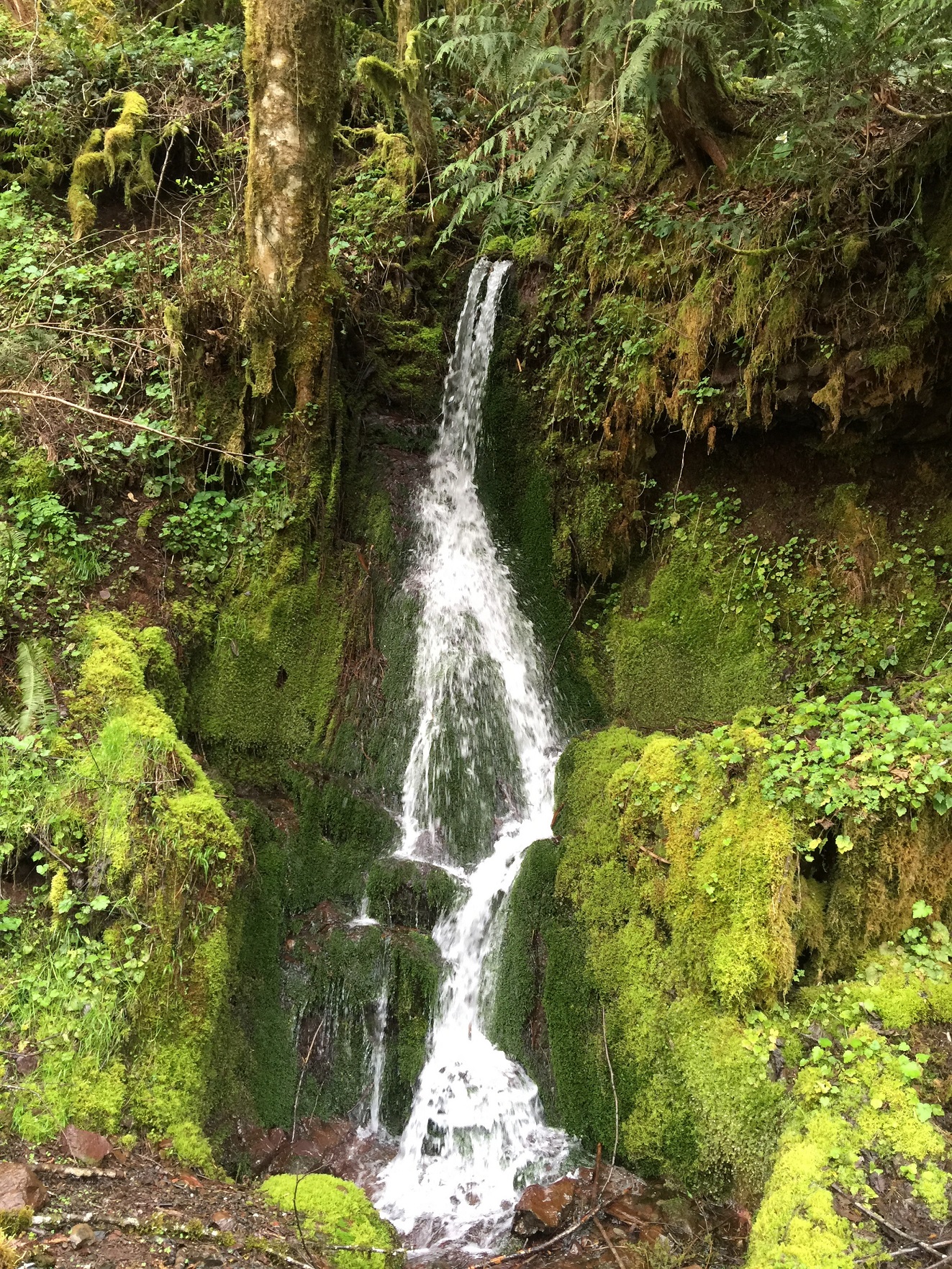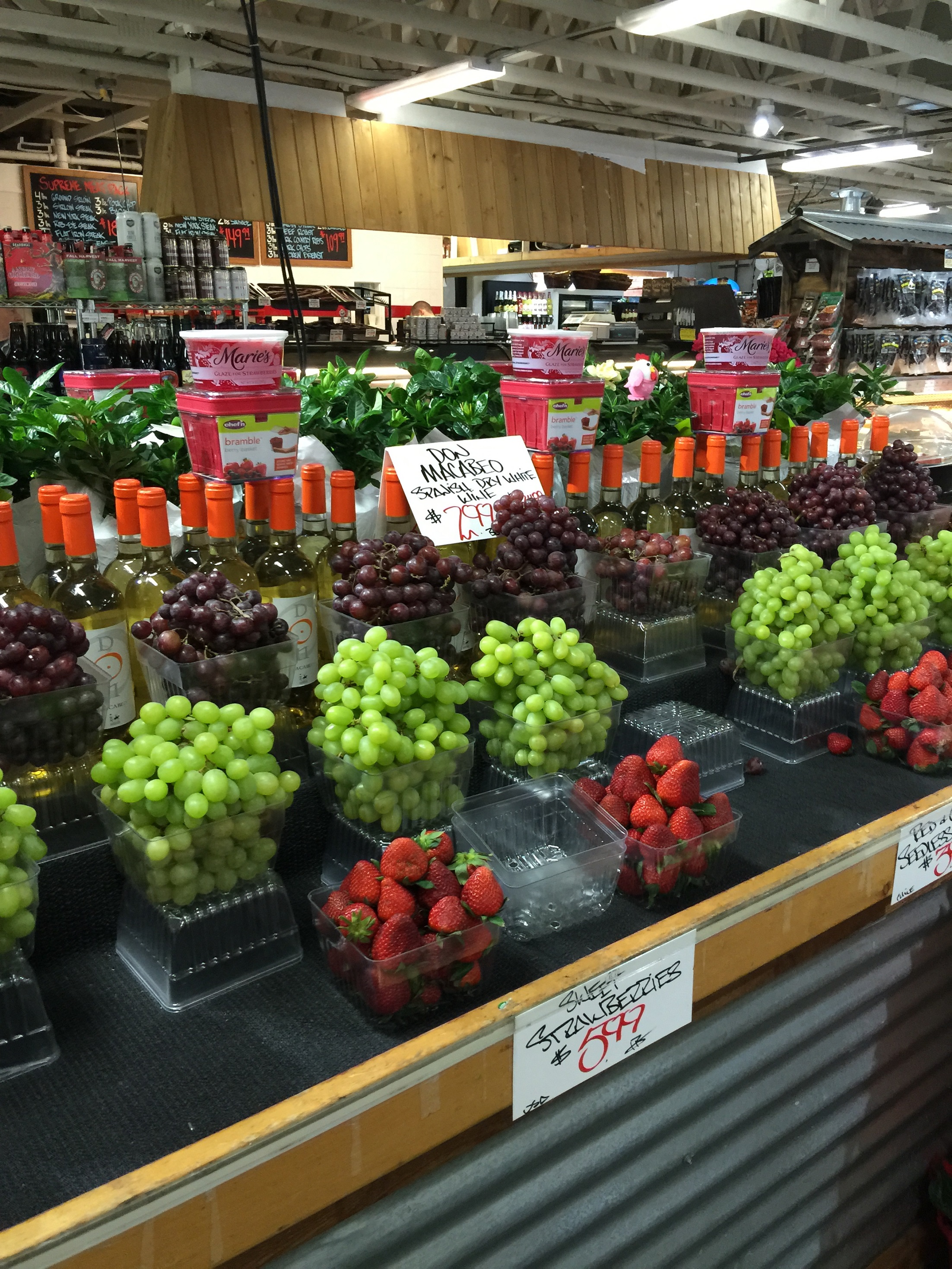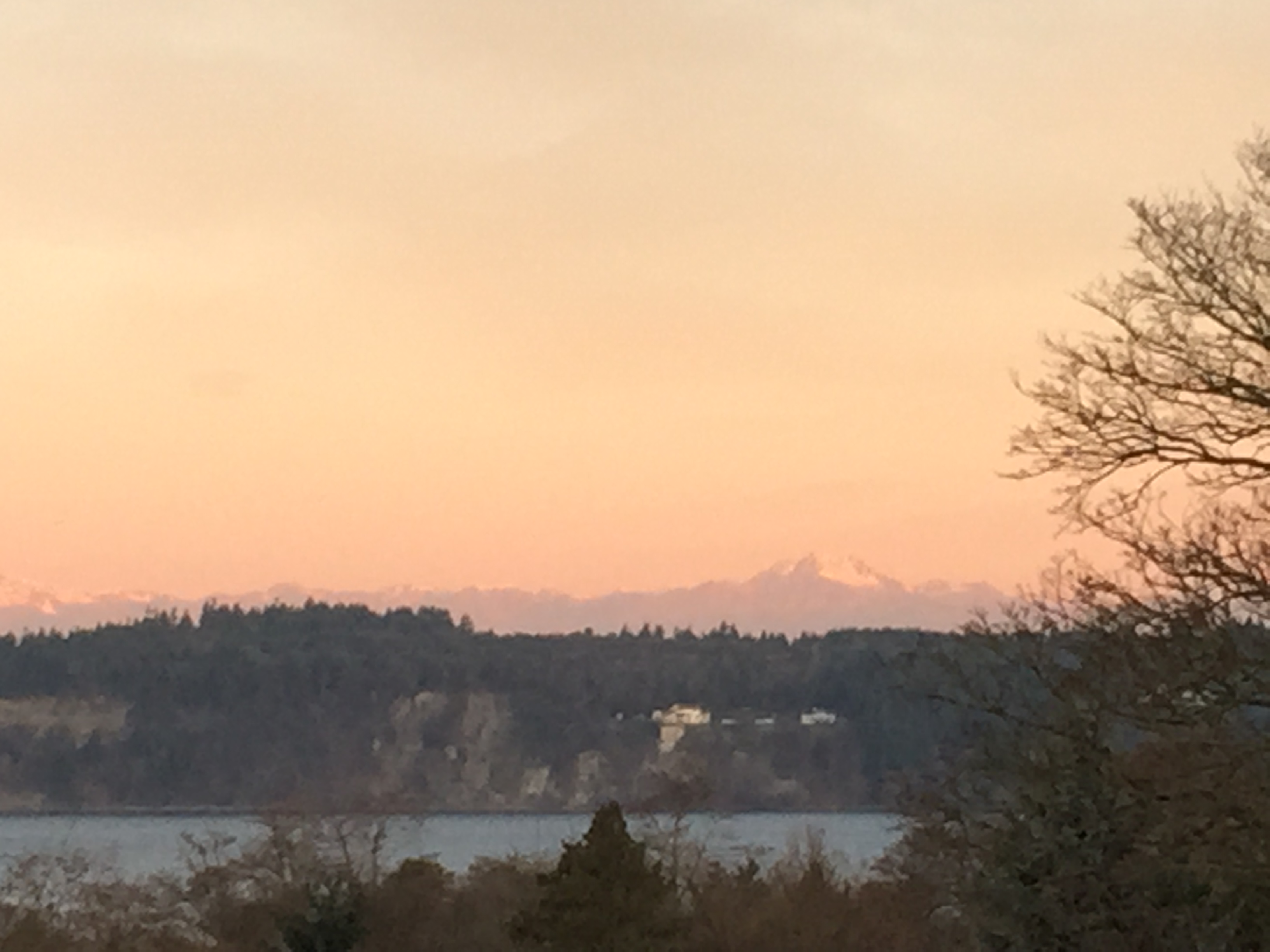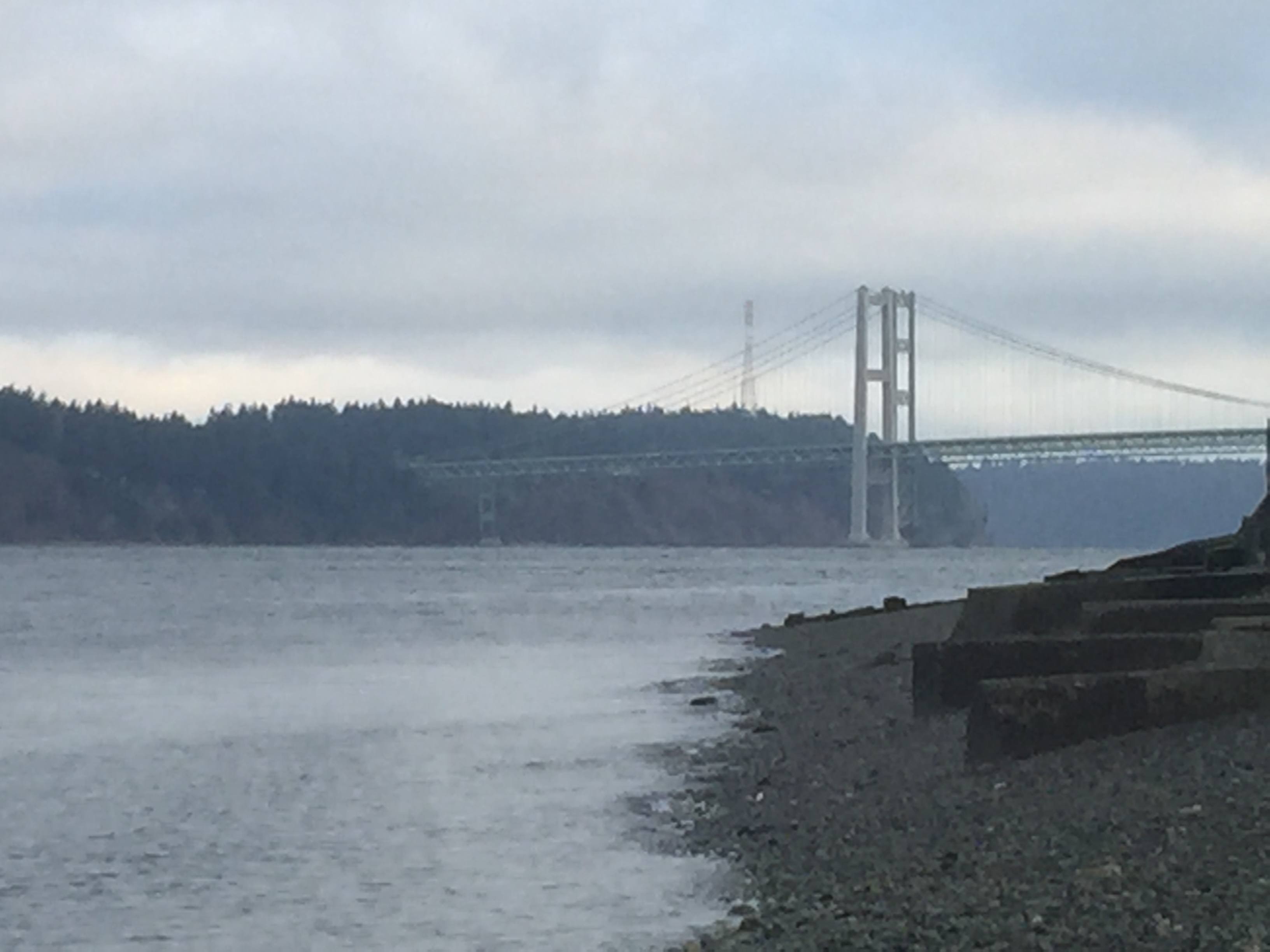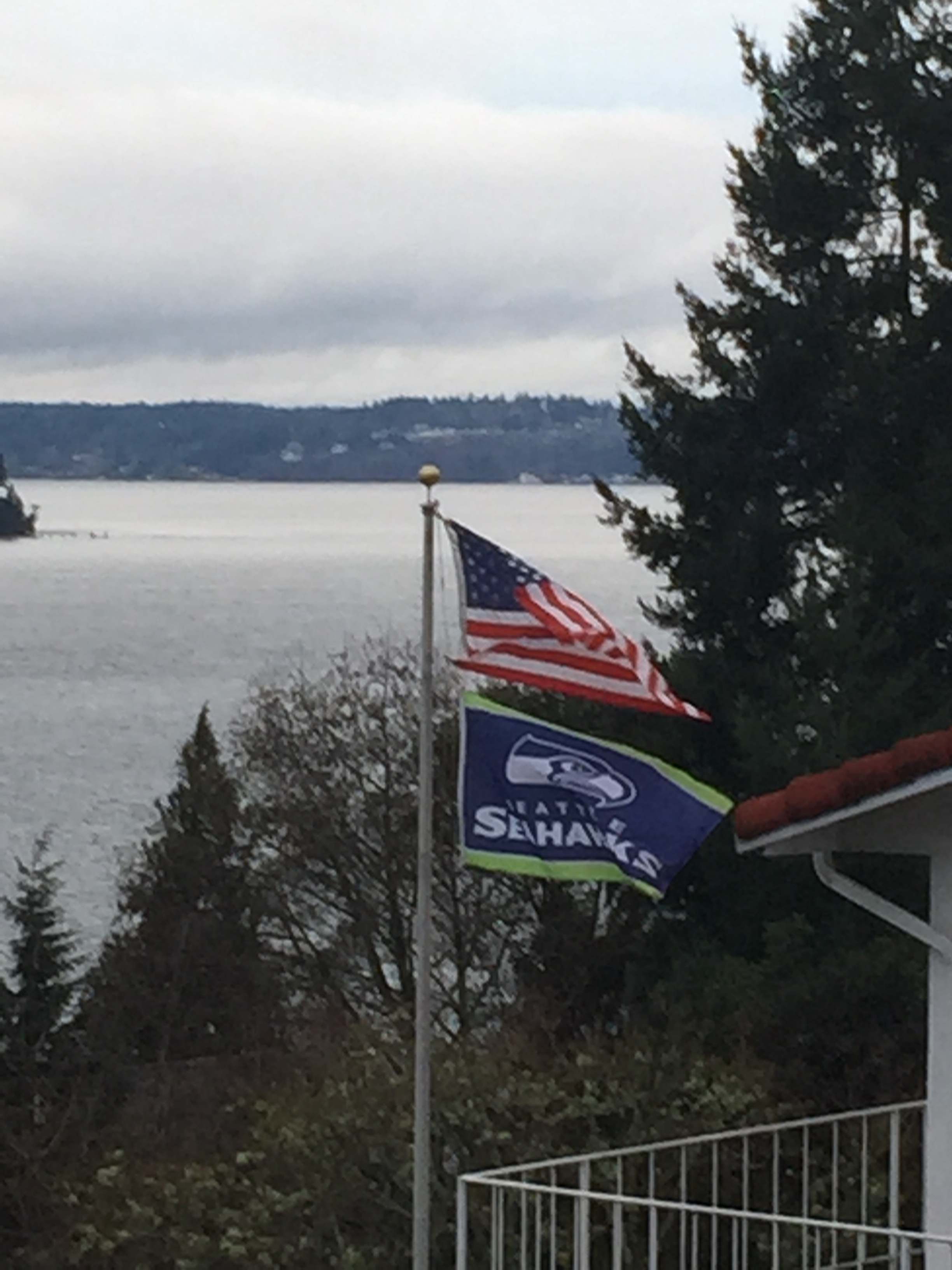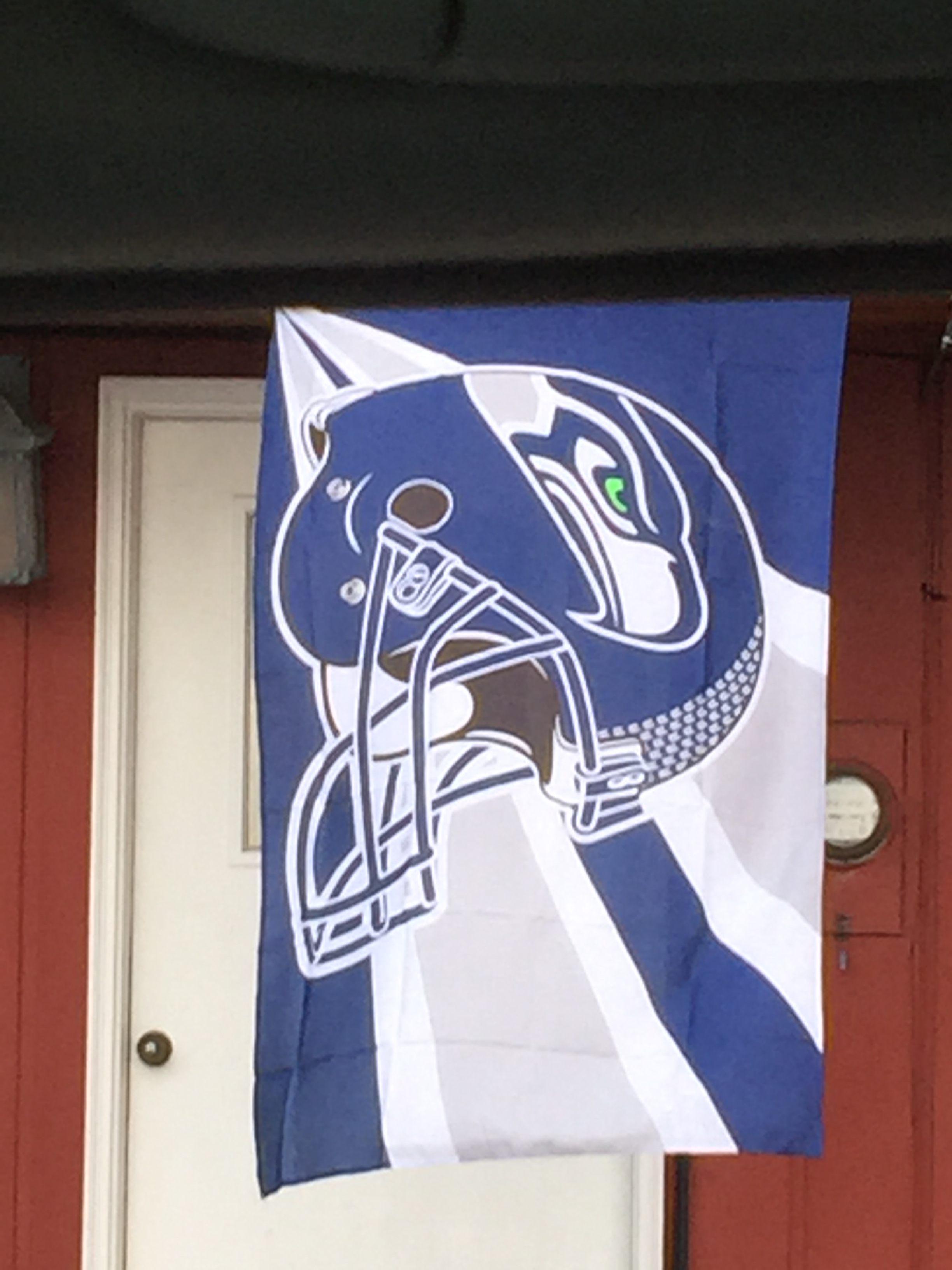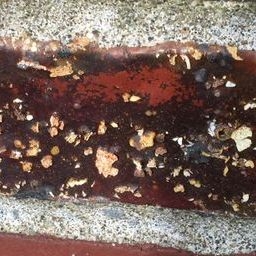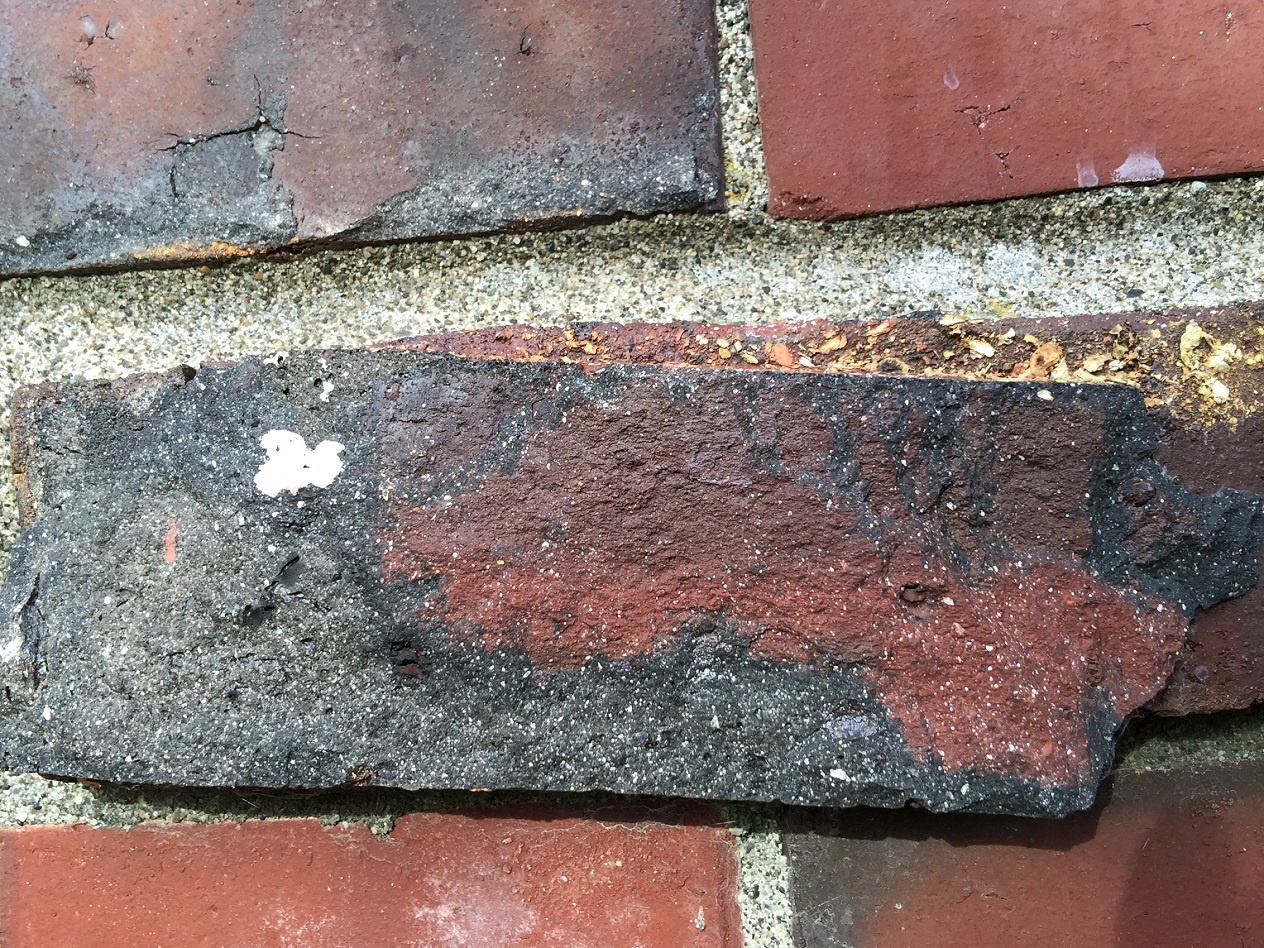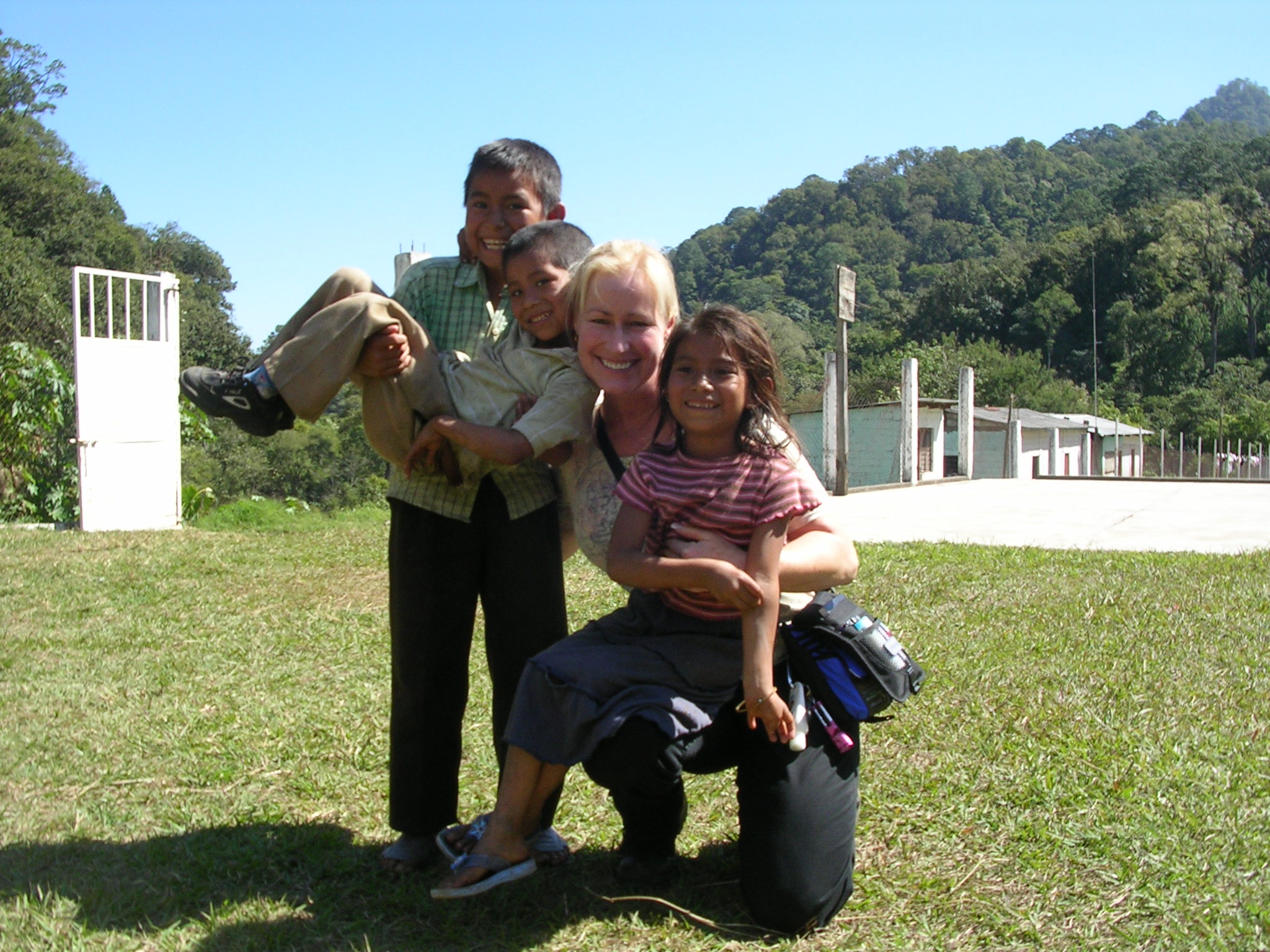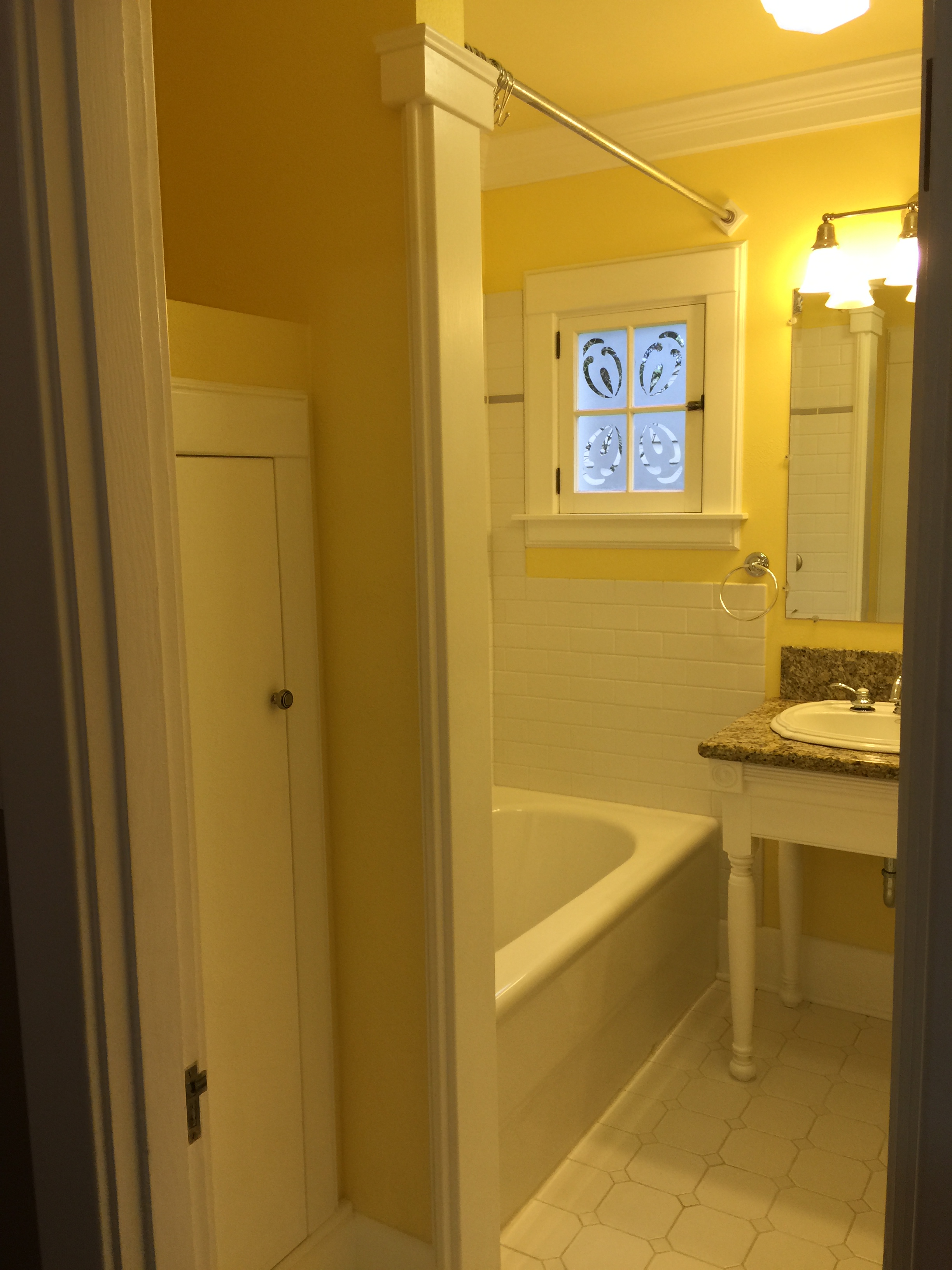A Fort, A Hospital & A Graveyard…..Beautiful Real Estate
As a youngster in the Pacific Northwest, I had the unique opportunity to spend many late afternoons and some weekend days playing piano on certain wards for and with patients at Western State Hospital, formerly Fort Steilacoom. My Mom worked on the wards as a psychiatric social worker and still today, works in that industry caring for new patients as well as those that were provided care by her and so many others when I was a little girl. This hospital and its surrounding grounds currently sit in Lakewood, Washington nestled up against the cities of University Place and Steilacoom, Washington.
Fort Steilacoom was founded by the US Army in 1849. It was one of the first military fortifications built by the US north of the Columbia River. The fort was headquarters for the US 9th Infantry Regiment. Fort Steilacoom was decommissioned as a military post in 1868 then in 1871, the Washington Territory repurposed the fort after purchasing it for $850 as an insane asylum with the barracks serving as patient and staff housing. Today that repurposed fort is called Western State Hospital.
Prior to 1871, when the state’s first insane asylum was established, the land that is today the hospital grounds and a public park had been enjoyed as a hunting ground for the local Indian tribes, and later as sheep pasture managed by the Hudson Bay Company’s Fort Nisqually. In 1849, the Hudson Bay Company of Great Britain leased the land to the American government to establish U. S. Fort Steilacoom (1849-1868). In 1853, the Puget Sound became part of the United States.
The real estate directly across the street from Western State Hospital was once a fully functional farm. Patients tended to a herd of dairy cattle that supplied milk products to patients and staff. The hospital was nearly self sufficient through an established piggery for meat, chickens, turkeys, vegetables, various crops (from beets to broccoli, cabbage, rutabagas, spinach, and horseradish) as well as a fruit orchard grown on fertile grounds fertilized from decomposing mud in Lake Waughop situated on the property. Labor for the farm was performed by hospital patients as part of their occupational therapy and building of life skills. At the height of the farm's productivity, 220 of the hospital's 840 acres were devoted to farm and pasture land.
Eventually, with the transition to medical therapies and the requirement for patient farm work to be a paid service, the active farm became cost prohibitive to maintain. Today there are remnants of the farm in several barns and open spaces. There is also a patient graveyard that is in its original space right next to a fabulous dog park, soccer fields, and a lovely walking path around Lake Waughop. There are over 3000 patients buried in this graveyard, some who were born as early as 1811 and laid to rest to forever enjoy the surrounds of green space, people and animals playing with eagles flying overhead.
Throughout my teenage and young adult years I played soccer on those fields at Fort Steilacoom park. Just walking on the fields, smelling the grass, the particular soil/mud and hearing the whir of wind across and through the firs, oaks and maples, sends me back to a happy time. In college I worked graveyard shift on the mentally ill criminal offender wards at the hospital and had an opportunity to appreciate the beauty of Fort Steilacoom and the hospital grounds in the hours of darkness and at daybreak (I tried to stay out of the graveyard at that time).
Today, from a real estate perspective, there is so much opportunity for those who are fortunate enough to purchase a home in this lovely community. Between the parks, the lakes, the history and the nice little chunks of land that can be purchased with a home, there are new memories to be made while honoring the rich past of Indian territory, entrepreneurial growth, military presence and patient care.
Hidden 4 bedroom Prospect Hill Treasure–Could be Your Slice of History
Tucked away in Prospect Hill's narrow sleeve is a 4 bedroom 1 3/4 bath bungalow born in 1919. As an integral part of the permanent structure, built-in's are found throughout this home from closets to pull-down desk tops. A claw foot tub adds dimension and charm to the downstairs bath where a peek-a-boo view of the bay from the upstairs 3/4 bath allows for morning day dreaming. French doors open to a small porch from one of the second floor bedrooms, again with a tight seasonal gaze at the Puget Sound.
The living room and kitchen have ceilings so tall it tempts you into an extra boost and bounce in each step as you stroll by the robust and established brick fireplace with a hearth at seat height. The kitchen, bright and cheery, abuts to the porch-like washer, dryer mud room. And, if you like spacious basements, complete with a carpeted space for a pool table, ping pong or other recreation, not to mention oodles of storage and a large shop/work area, this is your place. 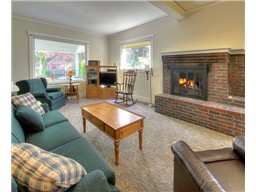
There is an oversized 1-car garage with alleyway access and a small parking pad on the west side of 2110 N. Steele Street, Tacoma, Washington 98407 listed at $325,000.00 MLS#785132. The back yard hosts a small patio and fabulous Snow Ball tree in all of its grandeur. The basketed front yards with grassy slopes all along this North Steele locale are framed by a rare, jettied cobblestone stretch set into position somewhere in the late 1800's to early 1900's. These cobblestones echo laughter and play of neighborhood children in their sorted angles and odd, timeless traffic control.
When exploring this unique and historical part of Tacoma, Washington, it is exciting to learn about its roots and also marvel in the easy-access, one-of-a-kind shops and amenities perfect for an afternoon or weekend stroll. Prospect Hill is thought to be the official planning name of the area, yet it has also gone by many other names. In the past, locals commonly referred to it as 'Little Germany' because of its narrow roads; it resembles a residential neighborhood that could be found somewhere in Europe.
If you have not heard of, 'Old Town' in Tacoma, it too is a hop, skip and a jump down the road. Located at the bottom of 30th Street hill and along Ruston Way is the birthplace of Tacoma. Mr. Job Carr, a founding father of Tacoma, has a street named after him that you would meander down from 2110 N. Steele Street on your journey to Old Town. Not a surprise that he and other founding fathers of Tacoma would settle in this niche where there is spectacular waterfront and views. This is Tacoma’s only Neighborhood Business District located on Commencement Bay where you will discover a host of dining experiences (to include Tacoma's oldest saloon called the Spar), jewelry, wine, coffee and other unique shopping opportunities present in this little stretch.
Dave's Meat & Produce is just south of the 2110 N. Steele Street address providing top quality produce, meat, seafood and known for its personal service. When you are preparing your weekend BBQ in your new home with an invite to family, friends and neighbors, you can send one of the kids up to Dave's Meat & Produce to grab the essentials to make your gathering a delicious success.
To add to the area adventure, there is a gulch nearby; some call it Buckley Gulch, others Yakima Gulch or Old Town gulch. The gulch does not actually reach Puget Sound anymore. Back in 1864, when first settler Job Carr staked a claim and pitched a cabin on the edge of Commencement Bay, Buckley Creek offered him easy fresh water, food and fish. Over the next few decades as the saw mills moved in to take advantage of Tacoma’s spruce and cedar forests, the creek was used for other things: providing clean steam and a pond for the Dickman mill at the creek’s mouth, and feeding Fullers Domestic Water Works at North 26th and Carr Streets. There is public access to the gulch through Ursich Park at 2412 N. 29th St. The trail gets boggy as you go through and eventually reaches private property. While it is possible to access the gulch at the Yakima (off West Road) and North 21st Street bridges (off Anderson Street), it remains private property whereas the mini-park at North 16th and Junett Streets is public.
Come and see this beautiful location, view this beautiful home and consider the possibilities of living at 2110 N. Steele Street, Tacoma, Washington 98407.
What does a Military Reservation converted to a Public Urban Park look like?
A Military Reservation converted to a Public Urban Park looks precisely like the magnificent Point Defiance Park. The Park is located on a pure and essential slice of Tacoma, Washington's northwestern slope with the northern most 400 acres of the original 702 acres being preserved old growth forest. This amazing and definitive piece of land was identified in 1841 by Charles Wilkes, a naval military explorer, who visited the Puget sound to map the bays and estuaries during the Wilkes Expedition, Wilkes is thought to have noted what an ideal fortress location this would be to, "bid defiance to any attack," with a fort positioned at the point that included views of Gig Harbor and across the narrows.
In 1866, President Andrew Johnson preserved the Point as a military reservation. The Park was allowed to be developed over time to include adding a street car from Downtown Tacoma into the Park under the condition the Park could be reclaimed if needed for military use. In 1899, a permanent zoo began to take shape with the construction of the first bear pit. There were also herds of elk, deer and bison that were featured. 1903 brought a restaurant and pavilion on the waterfront, and in 1905, President Theodore Roosevelt signed ownership of Point Defiance Park over to the City of Tacoma. A giant heated saltwater pool, the Nereides Baths, created a special draw to Park enthusiasts in 1906.This was Tacoma's first indoor swimming pool, once called a natatorium, with the salt water heated to 80 degrees and rental bathing suits available for 10 cents.
When I was growing up, my Mom would take us to Point Defiance to marvel at the Beluga whales that once splashed there, absorb the sites, sounds and smells of the famous Cindy the Elephant (an Asian elephant born in 1962, spent 40 years in total at this zoo and was known for her crankiness). She would take us by the bear cages still in place and tell us stories of the great Grizzly Bear escape in the late 1930's. I can recall and visualize black bears in those concrete and metal caged areas but am not certain that there were actually still live displays in that spot any longer (a vivid imagination I had when it comes to seeing large animals).
The Park today continues to be a place of peaceful escape. Winding roads through the forest and towering trees take your breath away, all the while skirting the high bluff cliffs overlooking the Puget Sound. The gardens, picnic areas and zoo offer incredible educational exposures to all who come to visit. Fort Nisqually rims the south western edge of the Park, a great place for young and old to imagine what the fur trade era was like. As a Brownie and Girl Scout, I carry fond memories of lunches and nature walks in and around the fort. The beach, Owen Beach, is a place suited for naps in the sunshine or large picnic venues with covered and open eating spaces. During the spring and summer, you see proud displays of shiny hot rods basking in the radiance of the sloped parking area as kayaks and fishermen float by. When I was in college and worked graveyard shift, as class schedules allowed, I would frequent the sandier spots of Owen Beach to steal a nap in the warmth of the sun to refresh my soul and remind me of the beautiful place Point Defiance Park has been and is to so many.
Why on earth would you live in Pierce County?
Quality of life has very specific meaning for every individual. Choosing a home in a particular geographic location is often tied directly to those individual quality of life definitions to include proximity to recreation and environmental jewels. Pierce County, comprised of Tacoma, Gig Harbor, University Place, and beyond, is uniquely positioned within Washington State to provide a pivot or launch point for easy access to breathtaking recreation and natural settings.
The Olympic National Forest is one of those amazing milieu's. This National Park is located along the northwestern most corner of Washington State. Nestled along the southeast portion of this park, just 1 hour from Tacoma, Gig Harbor and University Place, Washington is a place called, The Staircase Rapids Trail. Towering old growth Douglas Fir trees and other Evergreens create a canopy of moss adorned branches, rocks and waterfalls.
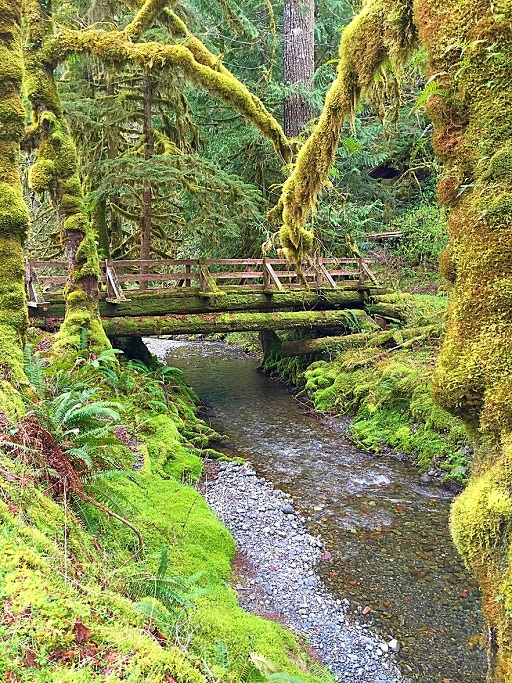 The curvy drive along the Hoods Canal, Lake Cushman and Skokomish River provide time and opportunity for quiet reflection of journeys once made by mule and cart while hauling logs and supplies through the Olympic Peninsula. A dam on Lake Cushman, originally created by glaciers during the last ice age, now provides electricity to the growing City of Tacoma carried across the lines that span the Tacoma Narrows, an active supply since March of 1926.
The curvy drive along the Hoods Canal, Lake Cushman and Skokomish River provide time and opportunity for quiet reflection of journeys once made by mule and cart while hauling logs and supplies through the Olympic Peninsula. A dam on Lake Cushman, originally created by glaciers during the last ice age, now provides electricity to the growing City of Tacoma carried across the lines that span the Tacoma Narrows, an active supply since March of 1926.
. Sometimes it is hard to imagine how this location, so close to home, could remain so wild and free. Even in Spring, the peaks of the mountains wear dustings of snow from low passing clouds building pack to supply the lake below and in turn, electricity for the City of Tacoma and nourishment for flora and fauna in the seasons to come. The waters of the river and the lake are so aqua-green-blue, you can feel and smell the frigid, clean and cold temperature without even a touch.
Sometimes it is hard to imagine how this location, so close to home, could remain so wild and free. Even in Spring, the peaks of the mountains wear dustings of snow from low passing clouds building pack to supply the lake below and in turn, electricity for the City of Tacoma and nourishment for flora and fauna in the seasons to come. The waters of the river and the lake are so aqua-green-blue, you can feel and smell the frigid, clean and cold temperature without even a touch.
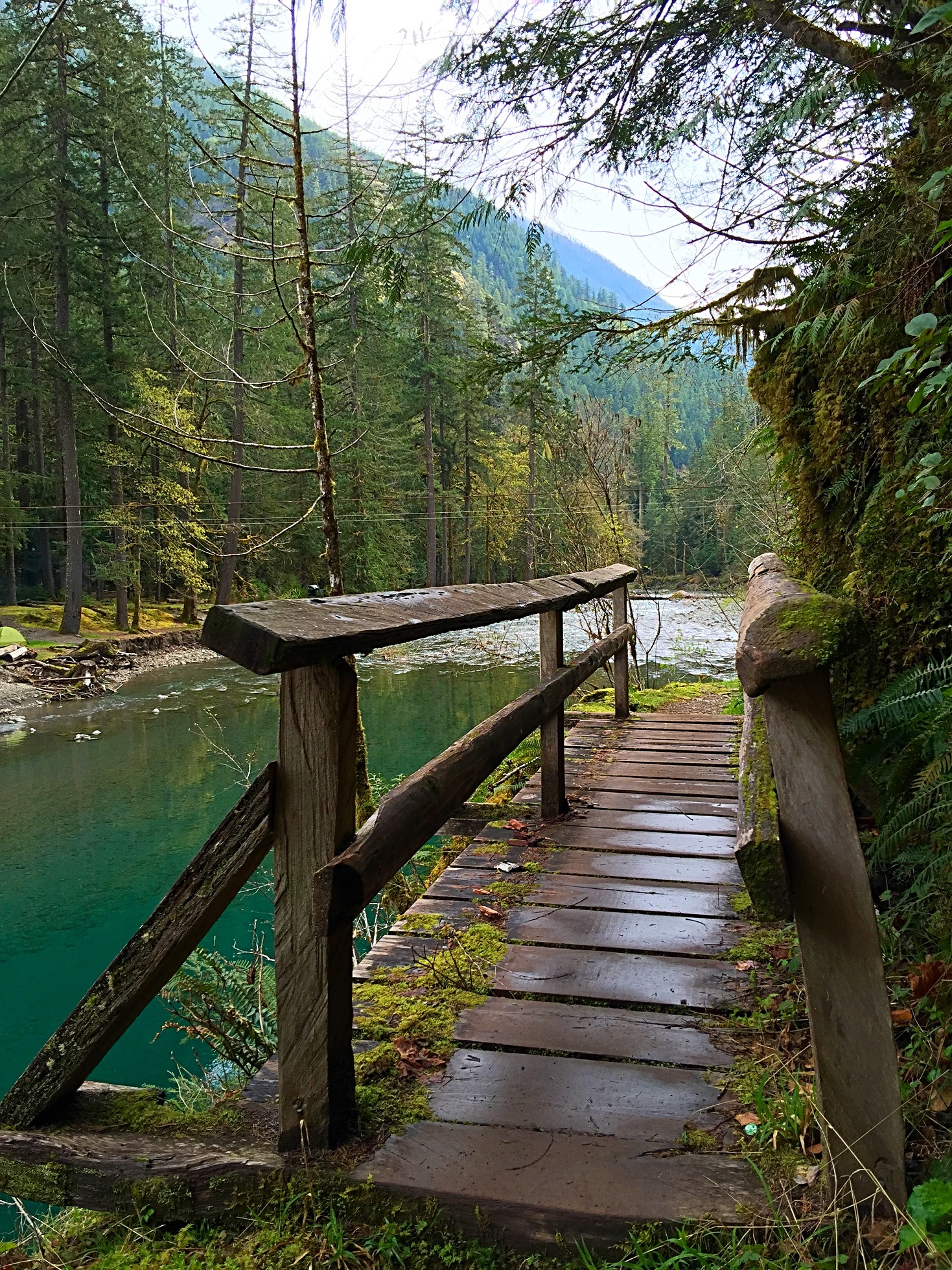 The Olympic National Forest is within arms reach of any resident fortunate enough to have chosen to live and breathe within Tacoma, Gig Harbor and University Place. To ride in your vehicle and hour or so west while gazing at passing Bald Eagles, tufts of white bubbly current along river ways, tumbling lake beds and waterfalls provides a much different experience than driving north in commuter traffic for an hour or more. So, when considering what to do to enhance your quality of life by touching nature, absorbing pure wild west ambiance, throw the Olympic Peninsula and the Staircase Rapid Trails into the mix–I pledge to you, your exposure to this wilderness and beauty will bring you a sense of peace and awe, not just about what you have seen, smelled, touched and tasted, but that you live so close to such an unbelievable utopia.
The Olympic National Forest is within arms reach of any resident fortunate enough to have chosen to live and breathe within Tacoma, Gig Harbor and University Place. To ride in your vehicle and hour or so west while gazing at passing Bald Eagles, tufts of white bubbly current along river ways, tumbling lake beds and waterfalls provides a much different experience than driving north in commuter traffic for an hour or more. So, when considering what to do to enhance your quality of life by touching nature, absorbing pure wild west ambiance, throw the Olympic Peninsula and the Staircase Rapid Trails into the mix–I pledge to you, your exposure to this wilderness and beauty will bring you a sense of peace and awe, not just about what you have seen, smelled, touched and tasted, but that you live so close to such an unbelievable utopia.
People buy their “Why’s” not their “Whats”!
The significant CHOICES that we make in life, when really dissected, come down to the baseline motivation of the "why's." For instance, 'why' do we want a big kitchen; is it because we like to have the family gather in that space to share in the cooking experience, is it because we entertain a lot and think that this equates to needing a ginormous kitchen space with fancy gadgets to prepare food for the masses? 'Why' do we want macaroni & cheese for dinner versus spinach and broccoli? 'Why' do we want 4 faucet heads in the shower? When talking about home choices, the 'what's' are the features; 3 bedrooms, 2 baths, 3 car garage which don't always satisfy the 'why's that bring you closer to functional and emotional satisfaction………so, when going through the decision making and selection process of your next home, try this exercise:
Each of those that will be involved in the decision making process are given a sheet of paper. Make 2 columns, the one on the left given a title of the 'WHAT'S' (features desired), the column on the right titled the 'WHY'S' (benefits derived from the features). Each individual typically is motivated by their own drivers, justification and desires for the 'why's' so it best serves everyone if each get their own sheet to fill out. Once each of you have filled out your paper, sit down and compare what has been listed. 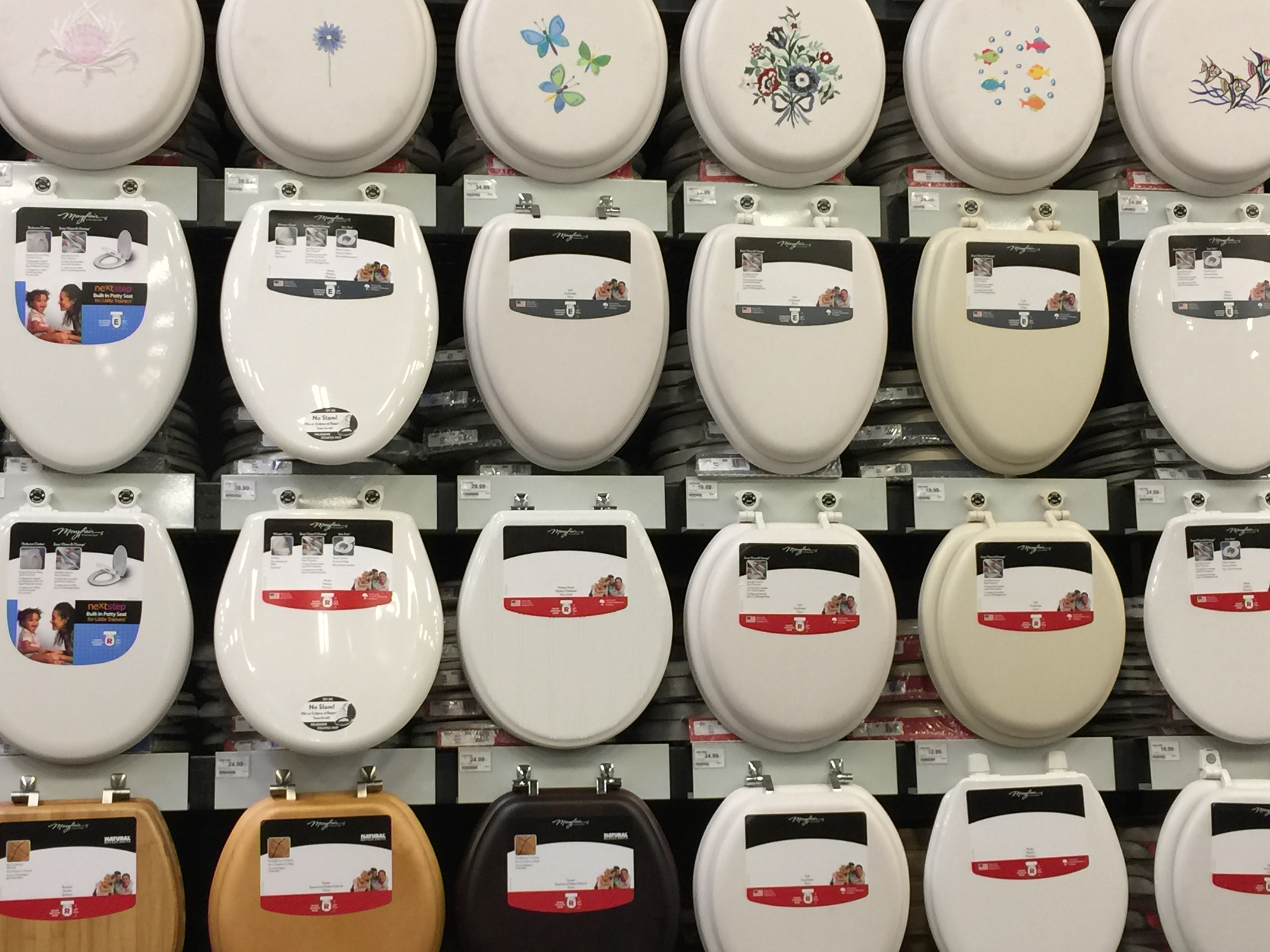
You might be surprised what are the why's behind the what's–some will be similar and some will end up being 'WOW's'. Once you have gone through this exercise, narrow your scope even further and, out of your 'what's and why's', prioritize them so that you know, understand, and have great clarity on which facets are your team non-negotiables in priority order for this huge life decision of purchasing a new or different home. After walking yourselves through this exercise, your home selection, toilet seat selection, or dinner selection will feel and be remarkably streamlined and efficient—it is the science behind choices. A simple exercise that yields great results.
The Miracle of Living in University Place, Washington
Good fortune, work and opportunity have exposed me to places in the world from Efate' to Jerusalem, Kuwait to London, Chengdu to Jakarta and beyond. At sunrise in many of these places, what you may hear is the guttural crank and throats clear of a freight truck or transport bus and quite possibly, air or water filled with unknown molecules that provide a burn of nasal passage and a foul taste or undetermined smell. 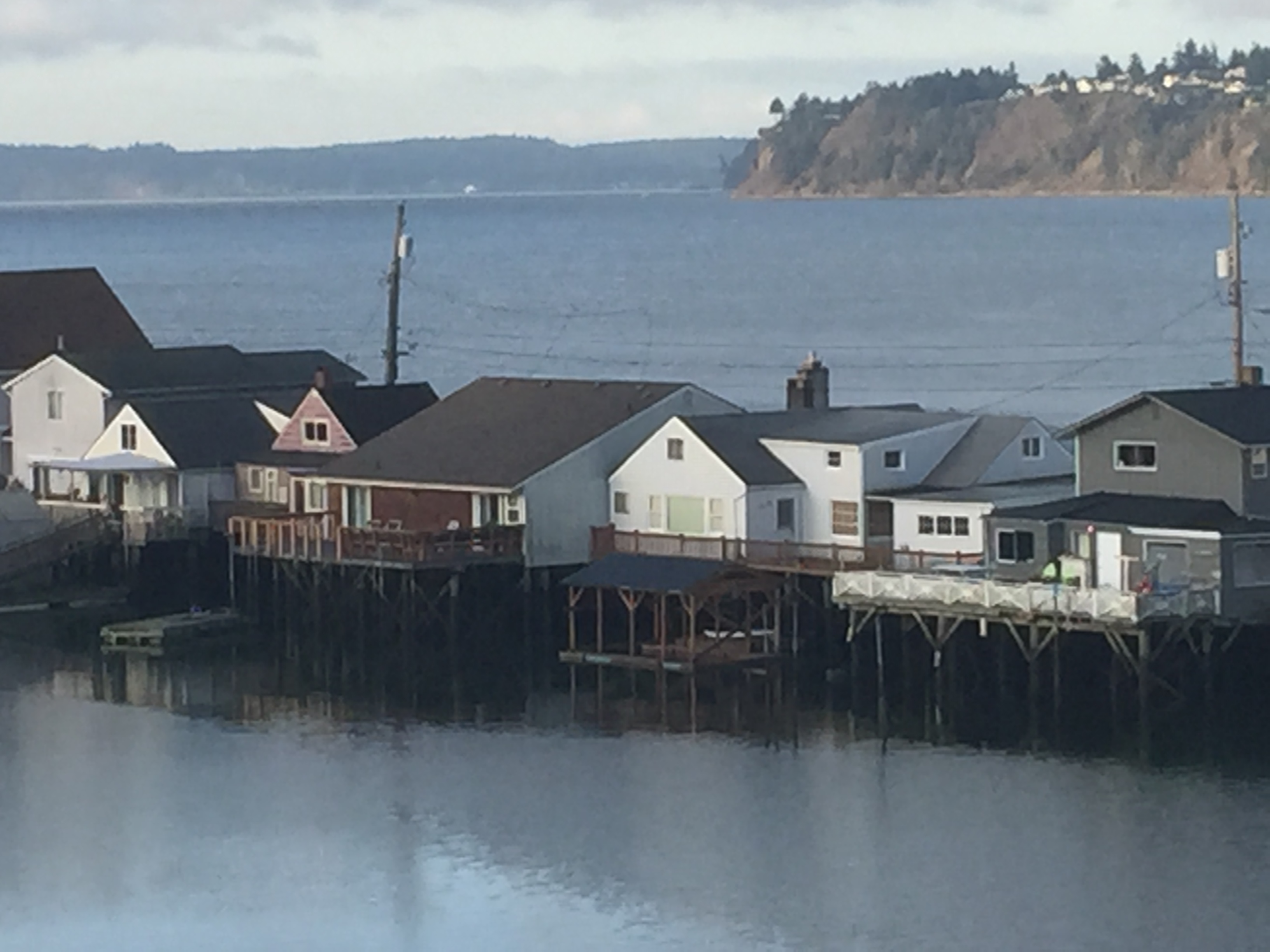
As I stroll at dawn on this beautiful day towards University Place's Day Island in Washington State, I gaze west at Gig Harbor and to the north at the Tacoma Narrows Bridge. These peaceful moments remind me of the miracle of living in University Place. All I can hear are a Robin's chirp at a quickly approaching Spring and Starling's call serenading Black Capped Chickadees' search for Birch Tree bugs. Ever so faintly in the distance I hear the fall of water and rush over rock as the hillside slopes into the Puget Sound with the splash of rain and runoff.
The Olympics just to the west are kissed with a snow dust as a harbor seal barks with a missed attempt to grab his morning fish. Canada Geese honk in laughter as they coolly paddle in synchronicity with the strong channel current. To have a choice, to select a home anywhere in this wide and wonderful world, I would always choose the miracle of University Place, Tacoma, or Gig Harbor Washington.
Spirit of Tacoma–The 12th Man, Woman & Child
Over the course of time, there have been so many ways the City of Tacoma, University Place and 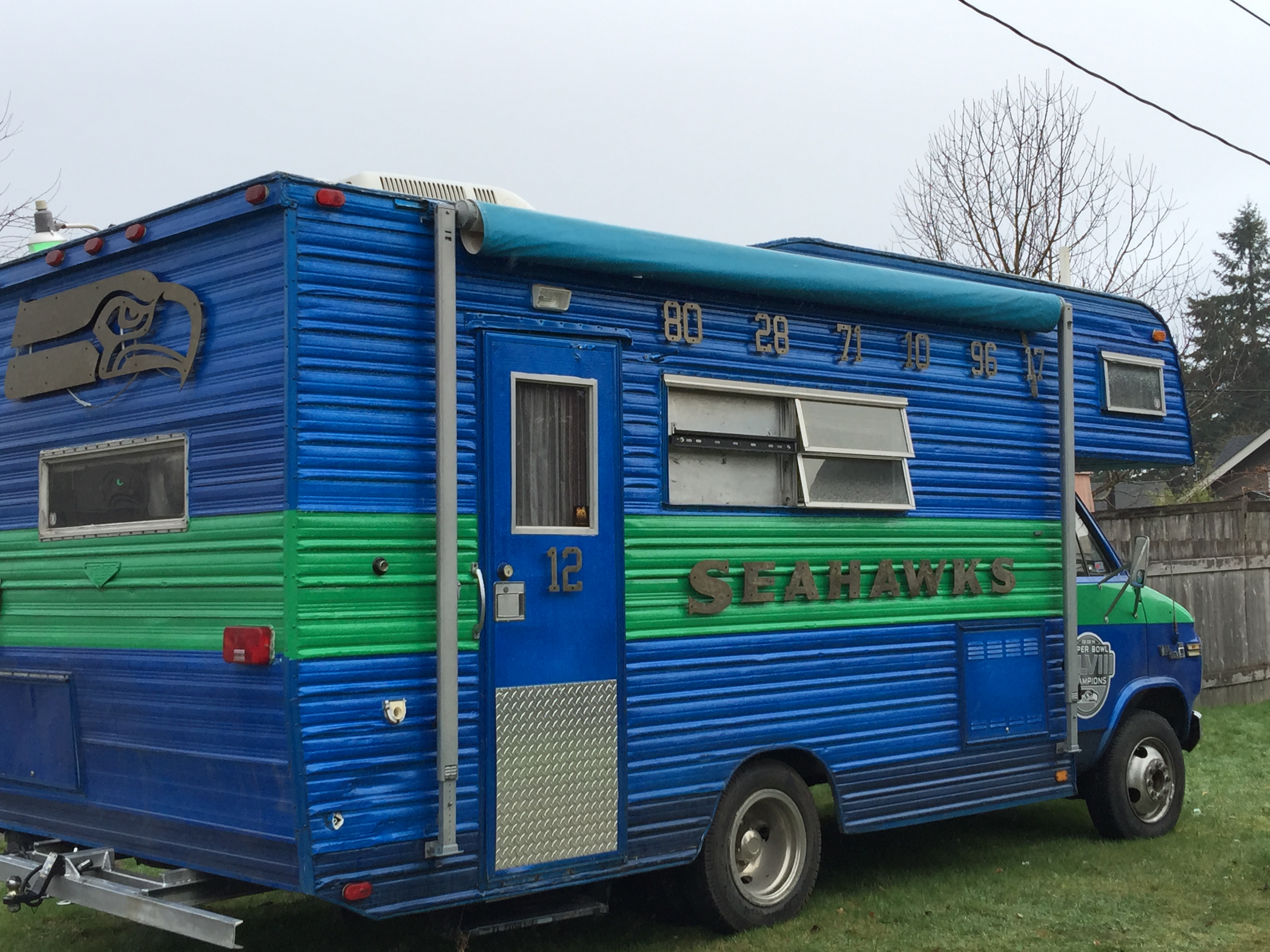 surrounding areas demonstrate their dynamism, great spirit, pride and energy. One of the most recent demonstrations was in support of our great Seahawks NFL team. Although the team is called the 'Seattle' Seahawks, the 12th Man lives, breathes and eats in Tacoma, Washington.
surrounding areas demonstrate their dynamism, great spirit, pride and energy. One of the most recent demonstrations was in support of our great Seahawks NFL team. Although the team is called the 'Seattle' Seahawks, the 12th Man lives, breathes and eats in Tacoma, Washington.
During the Super bowl XLIX, I happened to be driving around Tacoma and University Place. You could almost feel the excitement and tension of this event as you passed by homes blinged out in the 12th Man, 'Re-Pete', Blue & Green. The other key indicator of Seahawks progress and milestones during the game from the seat of my car were the fireworks bursting on high marking celebratory moments in the game.
What a wonderful place to live where the non-physical seat of emotions and character of the 12th Man truly are a reflection of the brilliance in the community, the definitive character of the area we call TACOMA. The City is filled with strength, vitality and vigor by virtue of motivation of most loyal fans. I can't wait to now look forward, yet again, to what the grand Spirit of Tacoma will next bring to our amazing neighborhoods.
‘She’s a Brick……..House’
What untold history may rest on the facade of your brick house in Tacoma, Washington? You may have the good fortune of your home being built with Clinker (sometimes spelled Klinker) brick. Clinker brick are brick pieces that when wet and placed too close to the fire in a kiln, became distorted and discolored–some even with a volcanic contort to them due to the extreme heat of the coal fires and slight melting principles that took place. The word, 'Clinker' is said to have described the tone or sound made when the bricks 'klinked' together. Colors of the brick, depending on heat levels, range from reds, oranges, yellows, browns, purples and blacks. You also see many with warted projections reinforcing their uniqueness much like a snowflake or pearl.
In the early 1900's these bricks began to be recognized as a valuable, artsy, and eccentric way of decorating a house, chimney or entry way. Sometimes the Clinker brick would be used to spell out the name of the home owner or the house numbers of a residence.These imperfect manufacturing accidents are no longer being produced in coal fired kilns. Instead, in this day and age of perfection where bricks are almost flawless in dimension, the result of mechanical production thousands at a time, most original Clinker brick is recovered in salvage operations and resold to those renovating or replicating a lost era in nostalgia.
So, if you go for a stroll through a Tacoma neighborhood or happen to live in a brick structure, take a close look–do you hear the musical nature of the crooked face sprinkled with Clinker brick? If so, share your homes' history with others and speak of days gone by where what was once viewed as manufacturer discard is now cherished as an unobtainable treasure.
What is a Real Estate Hospitalitarianologist?!
 Our business and personal lives are filled with opportunities for service (what can be done or brought to you) versus hospitality (that which can be done for you to add value to your life) [Bobby Stuckey Master Sommelier]. Having your Real Estate Agent ask you basic questions is only the first step to making them a hospitalitarianologist; the most important step is actually listening to and hearing what you are saying. The reality of the hospitality part of Real Estate is understanding the 'why's' that drive your, 'what I want in a home,' or the 'why's' behind the, 'deadlines or dollar amount needed from a sale.'
Our business and personal lives are filled with opportunities for service (what can be done or brought to you) versus hospitality (that which can be done for you to add value to your life) [Bobby Stuckey Master Sommelier]. Having your Real Estate Agent ask you basic questions is only the first step to making them a hospitalitarianologist; the most important step is actually listening to and hearing what you are saying. The reality of the hospitality part of Real Estate is understanding the 'why's' that drive your, 'what I want in a home,' or the 'why's' behind the, 'deadlines or dollar amount needed from a sale.'
The true value of hiring and selecting the right Real Estate Agent is to create value for yourself and your family. Are they hearing what you need, what you want and what you desire as well as, understanding the 'why.' The Agent you select will have, or should have, foundational market knowledge combined with human communication and connectivity skills. This combination is what will bring the harmony, balance and business results you deserve. [Let no one ever come to you without leaving better and happier. [Mother Teresa]
Fabled service should be expected. A Real Estate Hospitalitarianologist means that; we, as your Agent, must give you value beyond what you are able to yield on your own. In today's environment of easy access real estate market data and information, ask yourself….Is my Agent a Hospitaitarianologist?
Update, Upgrade or Preserve ~ That, is the question
Some of us appreciate the richness and wisdom of the old yet recognize the value in upgrading certain key parts of a home taking into consideration future resale value. Trying to, 'stay current,' with cutting edge trends and updates in your home may feel similar to trying to, 'stay current,' with the latest and greatest phone or computer technology.
value in upgrading certain key parts of a home taking into consideration future resale value. Trying to, 'stay current,' with cutting edge trends and updates in your home may feel similar to trying to, 'stay current,' with the latest and greatest phone or computer technology.
I always ask myself–'how does it feel,' when I walk into a home–is the intention to feel warm and welcoming with a well taken care of yet a lived in flare or, is it more for entertaining, appearance and impression rather than serviceability. And, is there really such a thing as 'timeless,' when it comes to describing the outdated? I think so!
Recently I was in a home built in 1923 with period fixture updates, a refreshed kitchen and bathroom and intelligent heating. The home shared a feeling of warmth and preserved period history with upgrades tastefully done in two key business savvy spaces …the bathroom and kitchen. So I guess it is true, you can have timeless warmth and fancy exhibition all at the same time.
So I guess it is true, you can have timeless warmth and fancy exhibition all at the same time.

 Facebook
Facebook
 X
X
 Pinterest
Pinterest
 Copy Link
Copy Link
